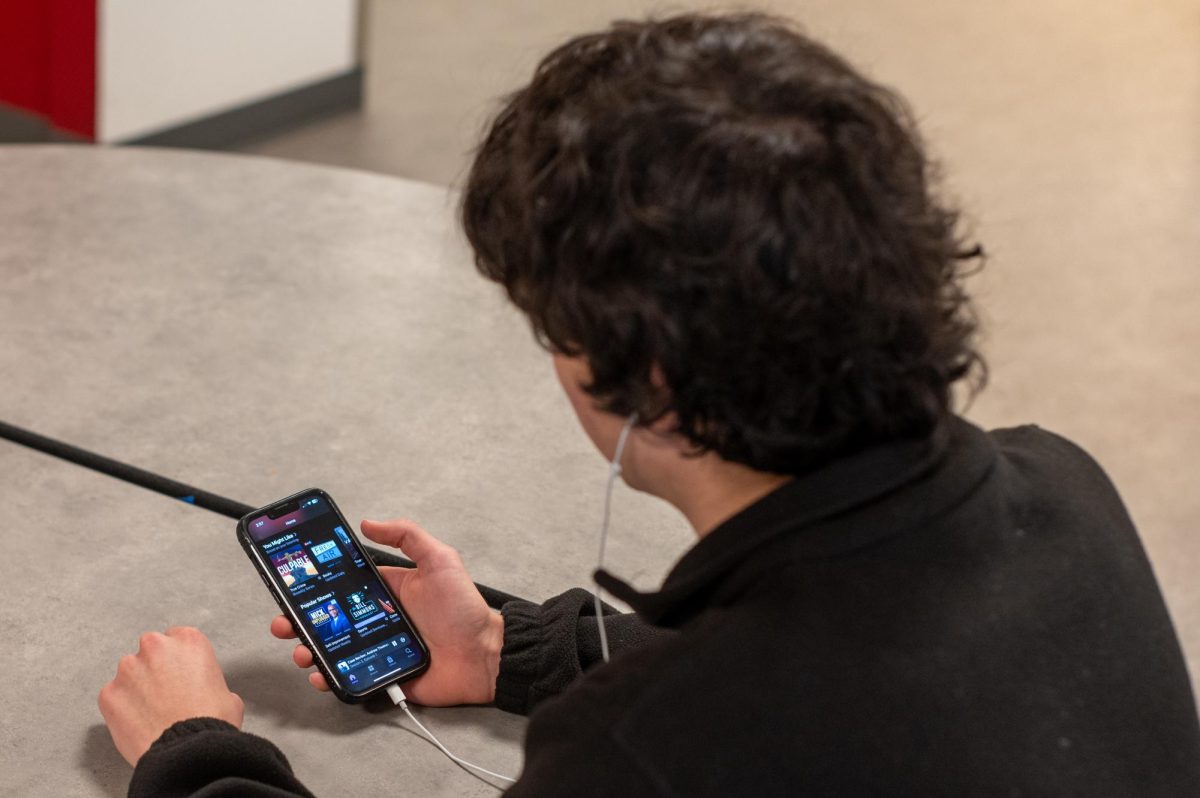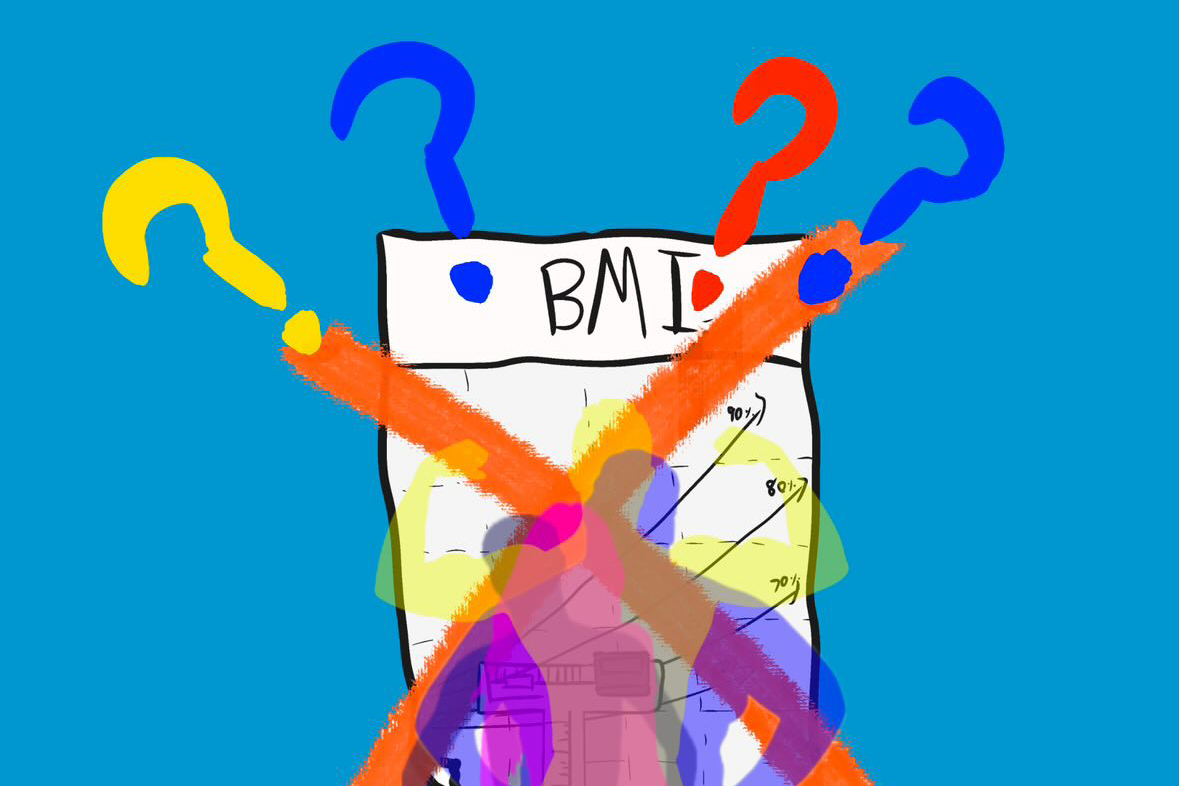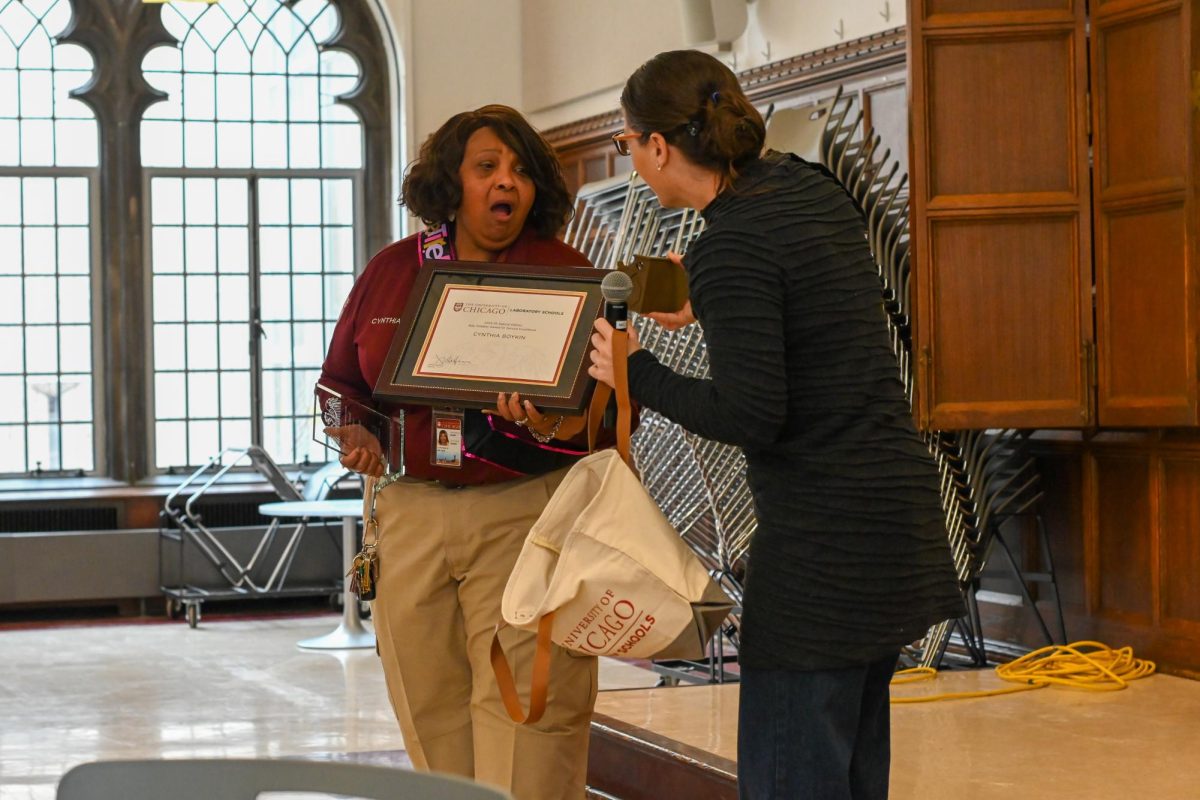From hallway chatter to historical events, here are some key historical moments documented by the U-High Midway in the past 100 years.
- World War II: In the early 1940s, the Midway offered ongoing commentary and updates on the war, and advertised defense stamps. Headlines like “Which For Hitler? Give Him the Noose — Buy Defense Stamps” and “Buy Defense Bonds and Stamps! The more yo’ lick the more we lick,” which featured a demonic-looking caricature, were published in Midways from this era.
- Walkout: In spring 1970, U-High faculty and students organized a walkout just days after four people were shot at a protest by National Guard troops at Kent State University. The U-High protest closed campus.
- Vietnam War: Coverage in editions on May 10, 1967; May 30, 1972; and Feb. 6, 1973; featured students’ opinions on the draft and the conflict, updates on the war, and calls to actions for students, including protests and peace marches.
- Watergate: A milestone in investigative journalism in which Washington Post reporters Bob Woodward and Carl Bernstein uncovered illegal acts from President Richard Nixon’s campaign, eventually leading to the President’s resignation. A May 29, 1973, article details U-High students’ reactions to the revelation of the scandal.
 Black students’ experiences: Although U-High has long preached inclusivity and progressivism, minority groups frequently felt unvalued and excluded at U-High, according to a 1979 Midway with the headline, “U-Highers don’t see discrimination here, but do see social separations” Dating back to the 1960s and continuing into the 2020s, numerous articles highlight the unwelcoming feeling toward Black students’ experiences at U-High.
Black students’ experiences: Although U-High has long preached inclusivity and progressivism, minority groups frequently felt unvalued and excluded at U-High, according to a 1979 Midway with the headline, “U-Highers don’t see discrimination here, but do see social separations” Dating back to the 1960s and continuing into the 2020s, numerous articles highlight the unwelcoming feeling toward Black students’ experiences at U-High.- The “Millennium Bug”: Also known as the “Y2K” bug, was a widespread concern that computer systems, which used a two-digit year code, would glitch in the coming year of 2000 by reverting to the year 1900 instead of proceeding forward, potentially causing malfunctions across the internet and in systems relying on older computers from banking to national security. This panic is covered in the Dec. 14, 1999, edition.
- AIDS epidemic: The Feb. 14, 1989, edition featured a two-page spread called “Understanding in the age of AIDS,” a collection of articles documenting students’ opinions, awareness and expert information during the AIDS epidemic. The articles emphasize how the epidemic is serious, but U-High students don’t feel like it is a reality in their lives yet.
- 2016 Clinton v. Trump campaign: The Midway has a long history of covering national, state and city elections. The 2016 campaign was covered in February, June, October, November and December that year with news stories about biographies of potential candidates, mock election results, criticism of voters for wrongly focusing on Ms. Clinton’s sex rather than her extensive political background, and multiple articles to understand the impact of Donald Trump’s win.
- Coronavirus: The Midway’s first story about what would become the pandemic was on Jan. 30, 2020, about a postponed exchange trip to China, but coverage in print wasn’t published until March 12, 2020, less than a week before school closed. Print coverage on March 9, 2021, heralded the return to in-person classes. More than 150 stories chronicle a year of distance learning as well as the months and years after in-person school resumed, ensuring the community was informed on the many changes to every aspect of school and life during the pandemic.
- Artificial Intelligence: Starting in January 2023, the Midway dove into covering AI as it started gaining massive popularity through ChatGPT, eventually evolving into tools for doctors and a companion on social media platforms. Articles covered educators adapting AI for school environments, as well as ethical concerns about the softwares.





















































